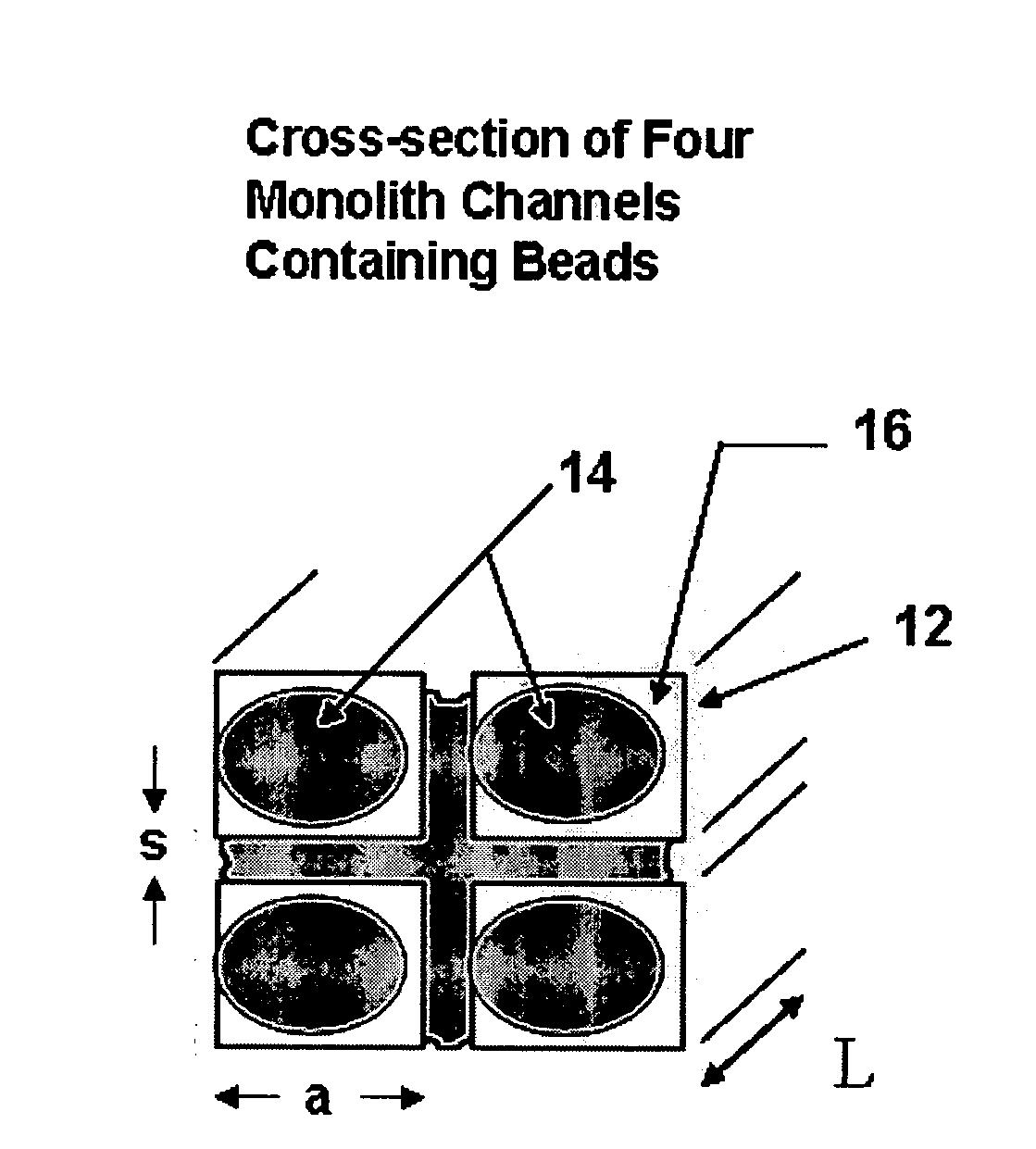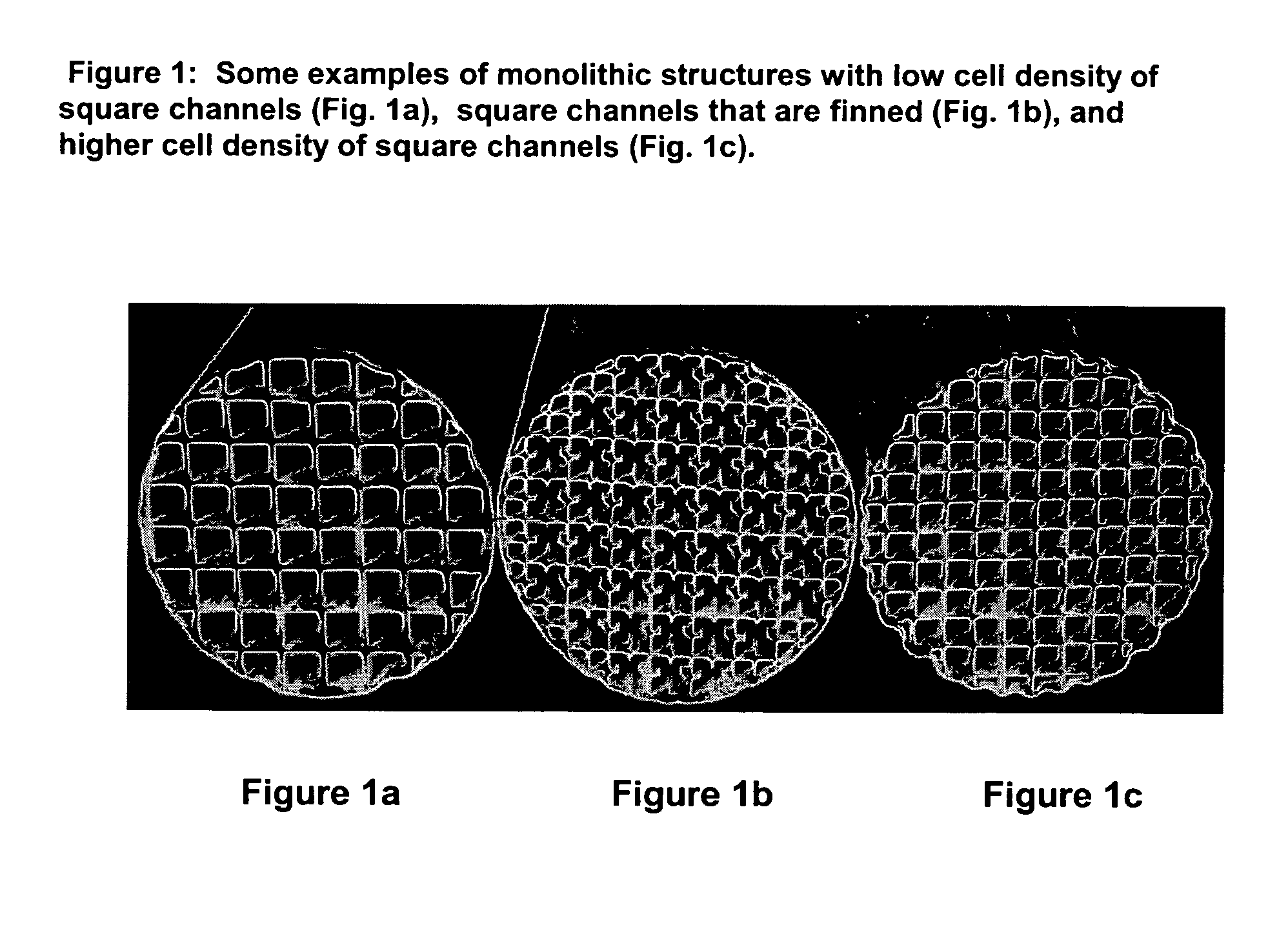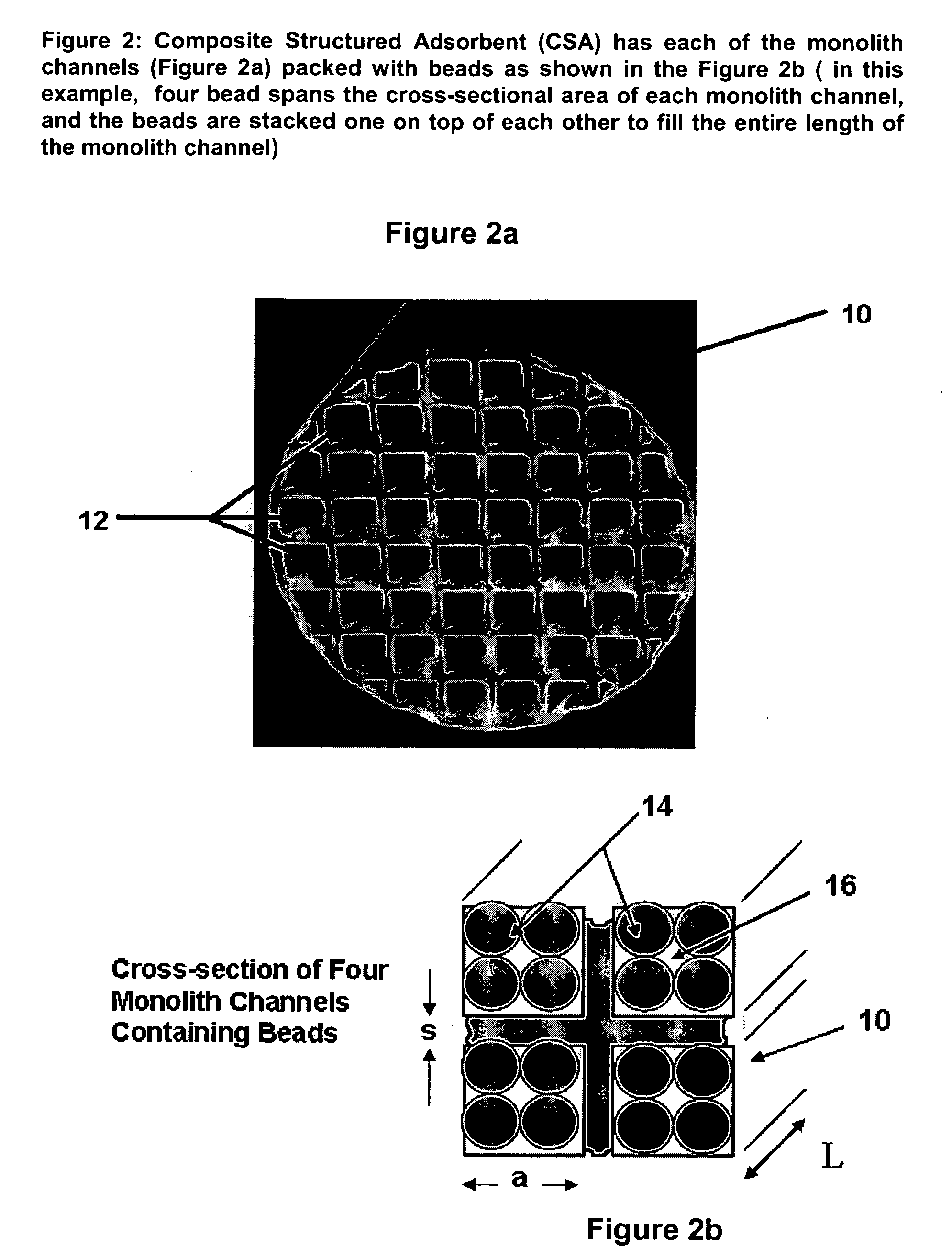Composite structured adsorbents
a technology of adsorbents and structures, applied in the field of composite structured adsorbents, can solve the problems of purity relative, concomitant degradation of desired products, and low mass transfer coefficients per unit length, and achieve the effect of reducing power consumption and reducing the pressure drop of the adsorbent bed
- Summary
- Abstract
- Description
- Claims
- Application Information
AI Technical Summary
Benefits of technology
Problems solved by technology
Method used
Image
Examples
Embodiment Construction
[0029]As mentioned hereinabove, the present invention relates to composite structured adsorbents (CSAs) having a multi-channel framework (e.g., a monolithic structure), the channels of the multi-channel framework containing adsorbent particles therein and having a channel-to-particle diameter ratio in the range of 1 to 10, more preferably 1 to 7 and even more preferably 1 to 5, in the case of spherical particles (e.g. spherical beads). Various other forms of adsorbent particles can likewise be used in accordance with the present invention. For example, non-spherical beads, granular particles, cylindrical particles or pellets are suitable for use as adsorbent particles within the channels of the multi-channel framework. In situations where the adsorbent particles are non-spherical, the channel-to-particle diameter ratio of 1 to 10, more preferably 1 to 7 and even more preferably 1 to 5 can be determined using a hydraulic diameter of the adsorbent particles. As used herein, the hydrau...
PUM
| Property | Measurement | Unit |
|---|---|---|
| particle diameter | aaaaa | aaaaa |
| diameter | aaaaa | aaaaa |
| diameter | aaaaa | aaaaa |
Abstract
Description
Claims
Application Information
 Login to View More
Login to View More - R&D
- Intellectual Property
- Life Sciences
- Materials
- Tech Scout
- Unparalleled Data Quality
- Higher Quality Content
- 60% Fewer Hallucinations
Browse by: Latest US Patents, China's latest patents, Technical Efficacy Thesaurus, Application Domain, Technology Topic, Popular Technical Reports.
© 2025 PatSnap. All rights reserved.Legal|Privacy policy|Modern Slavery Act Transparency Statement|Sitemap|About US| Contact US: help@patsnap.com



